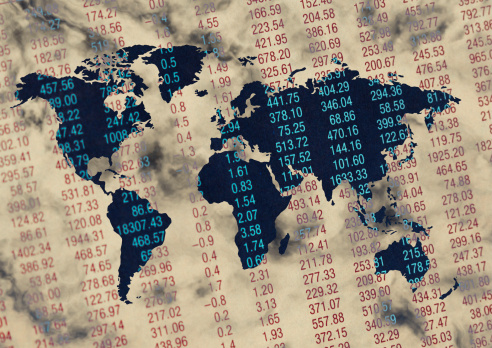While the developed economies of the world will stage improvements this year, and the growth of the developing world will accelerate sharply, the United States, the largest nation based on gross domestic product (GDP), is the key to a strong global recovery in 2014. At the core of the U.S. effect is the activity of Federal Reserve and its efforts to taper its stimulus programs. The recovery, in other words, may come down to the decisions of a single central bank.
Economists in America and abroad say that if access to money at extremely low interest rates in the United States begins to disappear, the American economy cannot sustain growth, which has only picked up sharply in the past few quarters, both based on GDP improvement and employment gains. The jobless rate in the United States, at 6.7%, is still well above the average when the economy is in strong recovery. American consumer activity is still about two-thirds of GDP, and the foundations of that activity are still modest.
The World Bank reports in its new “Global Economic Prospects” analysis that:
Growth prospects for 2014 are, however, sensitive to the tapering of monetary stimulus in the United States, which began earlier this month, and to the structural shifts taking place in China’s economy.
China likely will continue to step into the limelight as its cements it position as the world’s second largest nation as measured by GDP, and one that is growing much faster than the United States.
Other World Bank forecasts:
The report forecasts growth in developing countries to pick up from 4.8 percent in 2013 to a slower than previously expected 5.3 percent this year, 5.5 percent in 2015 and 5.7 percent in 2016. While the pace is about 2.2 percentage points lower than during the boom period of 2003-07, the slower growth is not a cause for concern. Almost all of the difference reflects a cooling off of the unsustainable turbo-charged pre-crisis growth, with very little due to an easing of growth potential in developing countries. Moreover, even this slower growth represents a substantial (60 percent) improvement compared with growth in the 1980s and early 1990s.
Global GDP is projected to grow from 2.4 percent in 2013 to 3.2 percent this year, stabilizing at 3.4 percent and 3.5 percent in 2015 and 2016, respectively, with much of the initial acceleration reflecting a pick-up in high-income economies.
In other words, the consuming economies will help those that produce the goods that are fruits of the recovery in the United States, Europe and Japan.
As is the case with almost any forecast of global economic recovery, the most damaged engines of the recession may be unable to stage the recoveries necessary to help the world average. Kaushik Basu, the senior vice president and chief economist at the World Bank, said:
Global economic indicators show improvement. But one does not have to be especially astute to see there are dangers that lurk beneath the surface. The Euro Area is out of recession but per capita incomes are still declining in several countries. We expect developing country growth to rise above 5 percent in 2014, with some countries doing considerably better, with Angola at 8 percent, China 7.7 percent, and India at 6.2 percent. But it is important to avoid policy stasis so that the green shoots don’t turn into brown stubble.
Europe was so badly bloodied that some of its nations may not recover for years, if at all.
Monetary policy has been among the most important triggers of U.S. economic improvement. And the World Bank has decided to emphasize that as the recovery’s largest single risk.
It’s Your Money, Your Future—Own It (sponsor)
Retirement can be daunting, but it doesn’t need to be.
Imagine having an expert in your corner to help you with your financial goals. Someone to help you determine if you’re ahead, behind, or right on track. With SmartAsset, that’s not just a dream—it’s reality. This free tool connects you with pre-screened financial advisors who work in your best interests. It’s quick, it’s easy, so take the leap today and start planning smarter!
Don’t waste another minute; get started right here and help your retirement dreams become a retirement reality.
Thank you for reading! Have some feedback for us?
Contact the 24/7 Wall St. editorial team.


